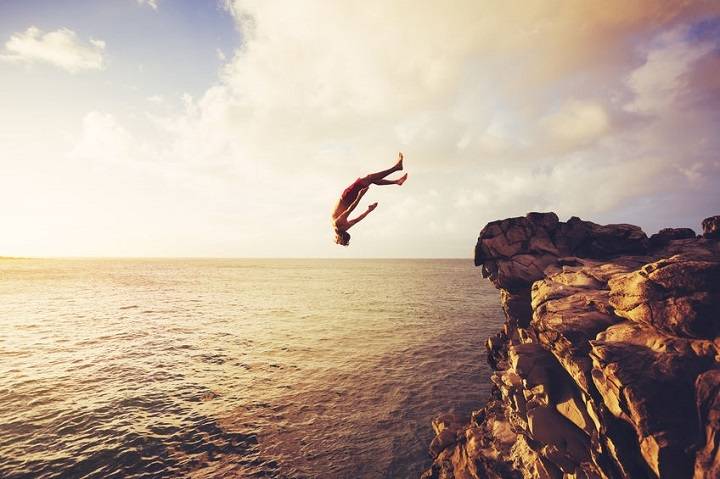Split face diving has become a thrilling trend among water enthusiasts, offering a unique underwater experience. However, like any adventurous activity, safety is paramount. The keyword “split face diving accident Twitter” suggests a need for information on incidents related to this diving technique shared on the social media platform. In this article, we explore the safety aspects of split face diving, the potential impact of Twitter in disseminating information, and the importance of responsible discourse when discussing diving accidents.
Unpacking Split Face Diving:
Split face diving involves descending face-first into the water, creating a streamlined posture that minimizes water resistance. Enthusiasts are drawn to the efficiency and speed achieved through this technique, making it a popular choice for those seeking an exhilarating aquatic adventure. However, as with any adventurous activity, understanding and mitigating risks are crucial components of ensuring a safe diving experience.
The Role of Twitter in Sharing Information:
Twitter, as a real-time social media platform, serves as a hub for sharing information, experiences, and discussions. The keyword “split face diving accident Twitter” suggests that individuals are turning to this platform for insights into incidents related to split face diving. While Twitter can be a valuable source of information, it is essential to approach discussions about diving accidents with a sense of responsibility and awareness of the potential impact on the diving community.
Responsible Discourse on Twitter:
Accuracy in Information Sharing: When discussing split face diving accidents on Twitter, accuracy is paramount. Misinformation can lead to unnecessary panic and tarnish the reputation of the diving community. Verify information from reliable sources before sharing.
Consideration of Sensitivity: Diving accidents involve real people and can have serious consequences. When discussing such incidents on Twitter, be mindful of the sensitivity of the topic. Avoid sensationalizing events or sharing graphic content that could distress viewers.
Encouraging Safety Awareness: Instead of focusing solely on accidents, Twitter discussions can be a platform to promote safety awareness within the diving community. Share insights on best practices, training programs, and responsible diving to contribute positively to the discourse.
Community Support: Twitter can be a space for fostering a supportive diving community. Encourage open communication, sharing experiences, and learning from each other. Mutual support can contribute to a culture of safety and responsibility.
Addressing Concerns about Split Face Diving Accidents:
Community Reporting: If there are legitimate concerns or incidents related to split face diving accidents, Twitter can serve as a platform for community reporting. Encourage divers to share their experiences responsibly, focusing on lessons learned and safety improvements.
Educational Initiatives: Diving organizations and professionals can use Twitter as a tool for educational initiatives. Share tips, guidelines, and resources related to split face diving safety to reach a wider audience and promote responsible diving practices.
Engaging with Experts: Twitter provides a direct line of communication with diving experts, organizations, and instructors. Engage in discussions, ask questions, and seek guidance from experienced individuals to enhance your understanding of split face diving safety.
Safety Measures in Split Face Diving:
Thorough Training: Comprehensive training in split face diving techniques and safety procedures is fundamental. Seek certified instructors and training programs to acquire the necessary skills and knowledge.
Buddy System: Never dive alone. Establish a reliable buddy system where each diver is responsible for the other’s safety. Effective communication and mutual awareness contribute to a safer diving experience.
Regular Equipment Checks: Ensure that all diving equipment is in good condition through regular checks and maintenance. This includes masks, snorkels, fins, and any additional gear specific to split face diving.
Safety Drills: Practice emergency drills regularly to ensure a swift and coordinated response in the event of equipment failure or other unforeseen circumstances.
Depth Awareness: Always maintain awareness of your depth during descent. Misjudging depth can lead to accidents, so utilize visual cues and dive within your skill level.
The Evolution of Safety Standards:
Discussions on Twitter can also contribute to the evolution of safety standards in split face diving. By actively engaging with the community, sharing experiences, and learning from incidents, divers, organizations, and regulatory bodies can collaboratively work towards enhancing safety practices.
Conclusion:
Twitter has become a significant platform for discussions, information sharing, and community building. When it comes to split face diving accidents, responsible discourse is crucial. By focusing on accuracy, sensitivity, and community support, Twitter discussions can contribute positively to the diving community. It is essential to remember that split face diving, while adventurous, requires a commitment to safety through thorough training, responsible practices, and adherence to established guidelines. As the diving community continues to grow and evolve, let Twitter discussions be a catalyst for promoting a culture of safety, responsibility, and mutual support among underwater enthusiasts.
